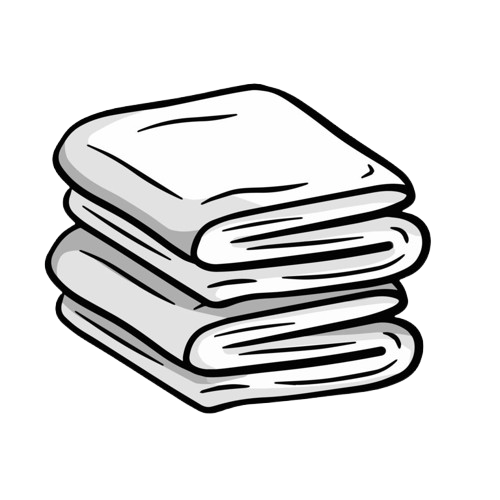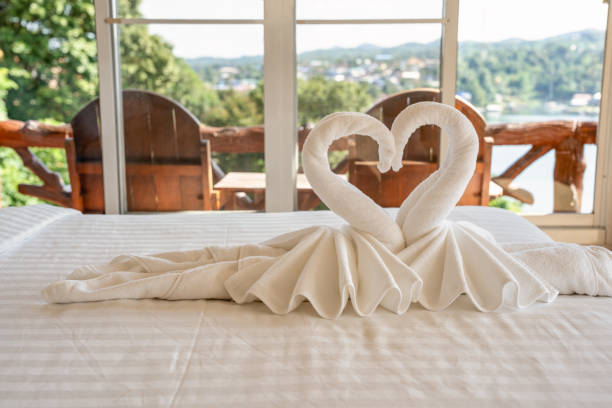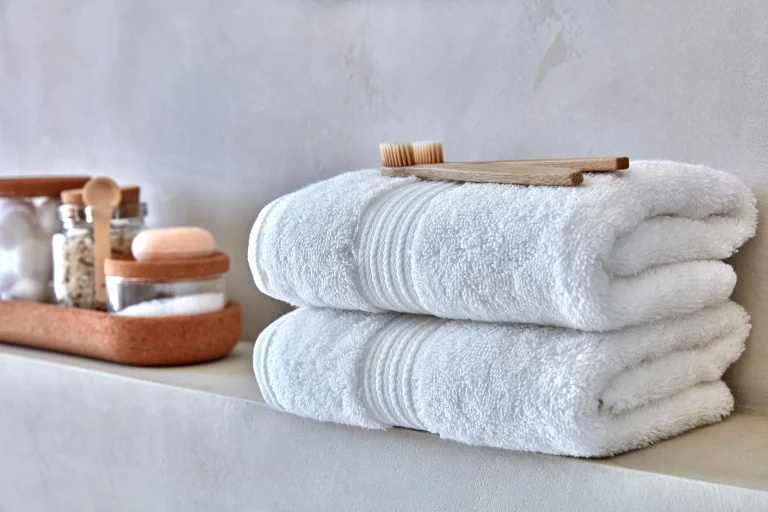The Art of Absorption: An All-Inclusive Guide to Selecting the Ideal Towel
Choosing a towel may seem like a simple task, but the seemingly simple act of wrapping yourself in a soft, absorbent cloth after taking a shower can greatly improve your everyday routine. Choosing the perfect towel can be a complex process because there are so many options available. By demystifying the important elements that affect a towel’s quality, this guide will assist you in making the right decision and selecting the ideal partner for your bathing routines and other uses.
Understanding the Fibers: The Heart of the Towel
The type of fiber used is the single most influential factor determining a towel’s softness, absorbency, durability, and even its drying speed.
- Cotton: The Timeless Classic Cotton reigns supreme in the towel world, celebrated for its natural softness and excellent absorbency. However, not all cotton is created equal.
- Standard Cotton: Good all-around performance, but can vary widely in quality.
- Egyptian Cotton: Renowned for its extra-long fibers, which create stronger, finer yarns. This results in incredibly soft, highly absorbent, and durable towels that tend to become softer with each wash.
- Pima Cotton/Supima Cotton: Similar to Egyptian cotton, Pima (and its trademarked equivalent, Supima) also features long-staple fibers, offering superior softness, strength, and absorbency. These are often considered premium choices.
- Turkish Cotton: Characterized by its long fibers and fewer “loops” than Egyptian cotton. Turkish cotton is celebrated for balancing absorbency with a quicker drying time, making it less prone to mildew. It tends to get softer with use.
- Organic Cotton: Grown without harmful pesticides or chemicals, organic cotton is an excellent choice for those with sensitivities or who prioritize environmental considerations. Its softness and absorbency are comparable to conventional high-quality cottons.
- Bamboo: Gaining popularity, bamboo towels are exceptionally soft, often described as feeling like cashmere. They are highly absorbent, naturally antimicrobial (resisting odors), and possess good wicking properties, making them dry relatively quickly. Bamboo is also a sustainable resource.
- Microfiber: Made from synthetic fibers (usually a blend of polyester and polyamide), microfiber towels are incredibly lightweight, highly absorbent, and dry remarkably fast. They are often used for travel, sports, or cleaning due to their efficiency. While soft, their feel is distinct from cotton, and they may not offer the same plush luxury for bath towels.
- Blends: Many towels combine different fibers (e.g., cotton-polyester blends) to achieve specific properties like enhanced durability, faster drying, or a unique texture.
Decoding Construction: How a Towel is Made
Beyond the fiber, how a towel is constructed significantly impacts its performance and feel.
- Terry Cloth (Looped): This is the most common towel weave, characterized by its absorbent loops of yarn.
- Single Loop: Lighter, faster drying, but can feel less substantial.
- Double Loop (Dobby Weave): Denser and more luxurious, offering superior absorbency and plushness.
- Low-Twist/Zero-Twist: Yarns are twisted less (or not at all), creating a softer, fluffier feel with greater absorbency, but they can be slightly less durable initially due to the looser fibers.
- Combed Cotton: The cotton fibers are “combed” to remove shorter fibers and impurities, resulting in a smoother, stronger, and more lustrous yarn.
- Waffle Weave: Featuring a distinctive grid-like pattern, waffle weave towels are lightweight, highly absorbent, and known for their quick-drying properties. They are often favored for bath sheets or lighter towels.
- Velour: Created by shearing the loops of a terry cloth towel, resulting in a smooth, velvety finish on one side. While soft and luxurious, the sheared loops make them less absorbent than traditional terry on the velour side, so they’re often used for decorative purposes or beach towels where absorbency isn’t the sole priority.
The Weight Debate: Understanding GSM
GSM stands for Grams Per Square Meter and indicates the density of the fabric. Generally, a higher GSM means a denser, heavier, and typically more luxurious towel.
- 300-400 GSM: Lighter, thinner towels, often used for gyms, kitchens, or quick-drying purposes.
- 400-600 GSM: A good medium range for everyday bath towels, offering a balance of absorbency and drying time.
- 600-900+ GSM: Denser, more luxurious, and highly absorbent towels. These tend to feel incredibly plush but take longer to dry. This range is often associated with high-end bath towels and bath sheets.
While a higher GSM often correlates with higher quality and plushness, it’s not the only factor. A well-constructed towel with premium fibers at a lower GSM can still outperform a high-GSM towel made with inferior cotton.
Size and Purpose: Matching the Towel to the Task
Towels come in various sizes, each designed for a specific function.
- Washcloth (approx. 12×12 inches): For facial cleansing and targeted washing.
- Hand Towel (approx. 16×30 inches): Ideal for drying hands in bathrooms or kitchens.
- Bath Towel (approx. 27×52 inches): The standard size for everyday drying after a shower or bath.
- Bath Sheet (approx. 35×60 inches or larger): Larger and more enveloping than a standard bath towel, offering maximum coverage and luxury, preferred by those who enjoy being completely wrapped.
- Beach Towel (various large sizes): Often thinner than bath towels for quicker drying, designed for lounging and drying off at the beach or pool.
Key Considerations for Your Purchase
- Absorbency vs. Drying Time: Consider your priorities. Do you want maximum absorbency (often higher GSM, denser fibers) or a towel that dries quickly (lower GSM, Turkish cotton, waffle weave)?
- Softness Preference: Some prefer the plush, thick feel of high-GSM Egyptian or Pima cotton, while others might favor the silky softness of bamboo or the crispness of a good Turkish cotton.
- Durability: High-quality cottons with longer fibers and well-executed weaves (like double-loop terry) tend to last longer and withstand repeated washing.
- Color and Style: While practicalities are key, aesthetics matter too! Choose colors that complement your bathroom decor and a style that appeals to you.
- Care Instructions: Always check the care label. Some premium towels might require specific washing temperatures or avoid fabric softener to maintain their integrity.
Choosing the perfect towel is a personal journey, balancing your specific needs with your preferences for feel and performance. By understanding the types of fibers, construction methods, and the significance of GSM, you’re now equipped to make an informed decision that promises lasting comfort and absorption, transforming a simple necessity into a small, everyday luxury.



